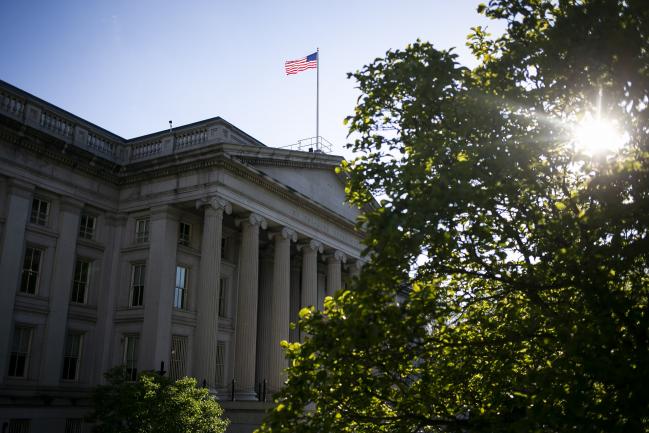(Bloomberg) -- The U.S. Treasury market is showing increased sensitivity to the tweets of President Donald Trump, with signs that algorithmic and high-speed traders are retooling models to take the social media posts into account, according to an analysis by JPMorgan Chase (NYSE:JPM) & Co.
The bank created the “Volfefe Index,” a reference to the president’s mysterious covfefe tweet of 2017, to track the correlation between Treasury yields and Trump’s tweets. The sensitivity has since increased, with one measurement jumping by more than 60% since JPMorgan introduced the index in September, according to its analysts.
Volatility in the Treasury market linked to Trump’s tweets has surpassed that linked to traditional sources of monetary and economic policy announcements, as measured by the Baker, Bloom & Davis Policy Uncertainty Index, JPMorgan said.
“This intuitively fits the mood of the political moment, where policy decisions are frequently communicated via that channel with limited preliminary coverage or analysis in public media,” wrote interest-rate strategists led by Josh Younger.
At the same time, algorithmic and high-frequency traders also appear to have fine-tuned their strategies to take the tweeting into account. Market depth attributed to these traders tends to fall in the minutes after Trump’s tweets, the analysts said, suggesting that automated investors may be treating the postings similarly to major releases of economic news such as non-farm payrolls.
The sensitivity of the U.S. interest-rate market to the president’s tweeting appears to have deepened even as their composition has, up until last week, veered away from the trade-related threats that preoccupied investors for much of last year. Prices on Treasuries rose on Friday after the U.S. president threatened trade tariffs on China.
“The impact of Presidential tweets cuts both ways,” the strategists wrote. “Whereas this channel was a material driver of volatility for much of 2019, more recent shifts in content have significantly dampened their impact. That said, it is arguably more important to focus on market sensitivity to, rather than the level of this driver. In that sense if anything volatility is more exposed to shifts in sentiment driven by this channel, were their focus to shift.”
©2020 Bloomberg L.P.

